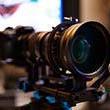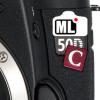
sam
-
Posts
273 -
Joined
-
Last visited
Reputation Activity
-
 sam got a reaction from Chrad in Canon 1D C to get $4000 price drop February 1st
sam got a reaction from Chrad in Canon 1D C to get $4000 price drop February 1st
First off, nice tutorial on imaging basics posted on dvxuser and elsewhere.
Now on to my Q's.
Were you some what scientific in your testing methods? , For the Epic Dragon what compression settings, which olpf, your debayer settings and gamma, iso or asa rating (set for optimal latitude or?), the scene captured and its dynamic range, nd filters with or without ir, resolving power of the lens, type of lighting ie.. plasma led, fluorescent, tungsten. color temp ?
For Canon 1dc, c log or picture style? over iso 400? and were all other applicable settings the same for both cams?
Then what size screen and its resolution did you view the images on? at 1:1 for both? Was your working colorspace for broadcast or cinema or was it srgb?
On to the grade. Did you try to color match to each other, throw on a lut or ? This is especially important in the 1dc's case. The 1dc log looks great and you can push it around quite a bit, but the chroma noise comes quickly once colors are saturated, (Had the 1dc since it came out, and see it regularly, but for small screen and web, not an issue) Ppro also definitely causes problems for the 1dc. I didn't take time to figure out the problem like Andrew, I just found it didn't look as good as in other software and moved on early last year.
2- Different mfgs use different amounts of noise removal. Take the Fuji's as an example. Everyone (including me) loves their colors and raves about them. Look on any of the major review site comparison images and you will see very little noise, even when compared to some of the best sensors available at any price. The fine detail is also gone. It looks nice, but soft. Notice the 1dc is softer than other 4k cams. Very pleasing. (perfect imho). Draw your own conclusions.
3- Depends upon settings above as well as being subjective
5- Dxo (if you believe them) rate Epic as the best they have ever tested. 14.8ev and color bit depth on par with medium format Phase one. Other proper tests including the one I mentioned in my earlier post clearly show otherwise, and the often quoted and outspoken Shane Hurlburt completely disagrees. (subscribed to his inner circle and not impressed) Andrews blog is far better.
6-Straight out of cam most seem to agree. Much better options for making the epic pretty though.
8- 1dc definely has banding on smooth gradients , (even in non adobe products) Add some noise and most of the time your okay
9- ff6k on the Dragon is 1.25 (roughly) so it is actually minutely larger than the 1dc. 19 megapixels as well. 18 for 1dc
" that's not important to me if the 1dc gives me no need to grade at all"
Lets be reasonable. Can you honestly say you would make a movie (other than a doc or reality) where you wouldn't have it graded?
-
 sam got a reaction from Scott Richard Gerst-privé in Canon 1D C to get $4000 price drop February 1st
sam got a reaction from Scott Richard Gerst-privé in Canon 1D C to get $4000 price drop February 1st
Speaking of technology switching to other things, shot side by side with fs700 raw (for the 4k hfr) at a skijoring event (ski racing with dogs on a course) this weekend and I have to say the 1DC was Incredible. I mounted the 1DC on a DJI Ronin with a Cinemilled adapter on top of a monopod. I could hoist the monopod over the crowd and direct the camera with a twist of the wrist, or go inverterted and have the 1dc skimming on top of the snow close to the dogs. The 1DC is light enough that I didn't need any other rigging. (6"2 200lbs though) When I did tire, I could rest the mononopod and once again a slight twist of the monopod gave ultra smooth pans. Controlled camera functions over a usb controller attached to a Zacuto evf. Highly mobile with very solid footage. Focus control was lacking but I stopped down and shot wide as my remote follow focus was tied up on the fs700. Will definitely use this setup in the future.
-
 sam reacted to Oliver Daniel in First music video shot on FS7
sam reacted to Oliver Daniel in First music video shot on FS7
The first music video I shot on FS7 and edited on FCPX is now available to see.
The features of the camera were to use 4k 50fps to punch in and slow down the footage at certain moments, and use the 150fps in 1080p for dramatic effect. I don't think this video shows off the resolution/colour as such - but the creative options available with higher frame rates (lacking so badly in all things Canon).
The brief was to go with a unique, dark, grungy, imperfect and grainy look to suit the intensity of the track - this is very much an "editors" video and it might give you a headache - it's flashing all over the place!
The GH3 was used on the projection scenes. We ran out of budget.
I have a 2nd video being edited now which is a pop track with a Maltese singer - this one is looking beautiful. It shows all the best features of the FS7. Out in 2 weeks.
My opinion on the camera.... best camera release since I can remember. Still, the menus and buttons are crap. Can't have it all!
Watch now and protect your ears!!!
-
 sam got a reaction from dahlfors in Tiffen Ultra / Low Contrast filters
sam got a reaction from dahlfors in Tiffen Ultra / Low Contrast filters
Here is a 2015 test comparing different strengths of Ultracon, low con etc... Some of the filters look drastic, but If you open multiple browser windows side x side and pause the test on Clean, Ultracon, lowcon etc.. you can make a better comparison. Keep in mind small vs large viewing screens and different focal lengths change the strength of a filters look. I use Schnieder Digicon a bit, as it lowers highlights by adding black specs in the filter. As you can see in the test, it is almost like an optical log. I also have used Hollywood Blackmagic to take the digital edge off, but it isn't included in the test. Curious how it compares to Glimmer Glass? http://vimeo.com/116316115
-
 sam got a reaction from Inazuma in Tiffen Ultra / Low Contrast filters
sam got a reaction from Inazuma in Tiffen Ultra / Low Contrast filters
Here is a 2015 test comparing different strengths of Ultracon, low con etc... Some of the filters look drastic, but If you open multiple browser windows side x side and pause the test on Clean, Ultracon, lowcon etc.. you can make a better comparison. Keep in mind small vs large viewing screens and different focal lengths change the strength of a filters look. I use Schnieder Digicon a bit, as it lowers highlights by adding black specs in the filter. As you can see in the test, it is almost like an optical log. I also have used Hollywood Blackmagic to take the digital edge off, but it isn't included in the test. Curious how it compares to Glimmer Glass? http://vimeo.com/116316115
-
 sam got a reaction from Ivar Kristjan Ivarsson in Canon 1D C vs Sony A7S 4K - dynamic range - preview
sam got a reaction from Ivar Kristjan Ivarsson in Canon 1D C vs Sony A7S 4K - dynamic range - preview
Well that depends on how the file was saved. The gamma could of changed if a rec.709 (or Bt.601, same luma different chroma) image was saved in an Srgb color space (or vice versa). Now admittedly, it would be a slight change, but still noticeably visible. (test with a b/w gradient in rec.709 toggled between color spaces) Of course both the 1Dc and A7s files were probably saved using the same procedure, but the s and c log would each respond differently to the gamma curve of the new color space. If this were an issue, one can still adjust each image to get an idea of dynamic range, but not one that's entirely accurate.
The accuracy of one's display device and color management is also crucial when making an objective comparison, The difference between what Andrew and others are seeing could be somewhat drastic. Based on the knowledge of Alexis Van Hurkman, Allan Teppur and Charles Poynton, I wouldn't use any monitor without hardware calibration for objective comparison purposes. A great article that briefly explains. http://diglloyd.com/articles/Recommended/display-calibration.html
-
 sam got a reaction from jcs in Canon 1D C used price slips under £5000 - and why I decided to take the gamble and get one
sam got a reaction from jcs in Canon 1D C used price slips under £5000 - and why I decided to take the gamble and get one
When James first got the Epic Dragon he posted a video still from the Epic (cant remember if he cropped or scaled the 6k down) and his 1Dc of the same scene. He was very impressed by how close 1DC compared if I recall.
But, with variable compression ratios of your choosing + supposed16bit raw + film log+ high frame rates+ 6k on down + anamorphic modes I would take it for the $$$. Anyone want to trade an Epic (or Scarlet Dragon) for my 1DC and some cash ?
-
 sam got a reaction from Gordon Zernich in More information on 10bit 4K 4:2:2 via micro HDMI on the GH4 without external box
sam got a reaction from Gordon Zernich in More information on 10bit 4K 4:2:2 via micro HDMI on the GH4 without external box
Rumor has it Atomos will announce such a recorder at NAB, but when that comes to market, who knows. Andrew, love your passion. To me, you are relentless in your pursuit of providing information on obtaining the best device, image, and price to the indie demographic. [web link removed]
Thanks for your hard work.
-
 sam got a reaction from rafael3d in Discovery: 4K 8bit 4:2:0 on the Panasonic GH4 converts to 1080p 10bit 4:4:4
sam got a reaction from rafael3d in Discovery: 4K 8bit 4:2:0 on the Panasonic GH4 converts to 1080p 10bit 4:4:4
Just to double check my months earlier results, I found a shot with some blue sky with banding that I took 2 weeks ago. (4k 4:2:2 8 bit) I saved one copy as a 16 bit tiff. I saved another exactly the same but downscaled by 50% using bicubic in ps. I then opened them in ps and toggled between the images, one viewed at 200%, and the other at 400% so they would be the same enlarged on screen size. The banding looked exactly the same in both and only the ever so slightest change in contrast which makes it appear a hair sharper., but really almost undiscernible. I then applied the same amount of saturation to each image to see if i could notice a difference in tonality. Zero. One thing I must admit i forgot this time around is making sure the scaling was done in linear gamma. I can't remember if photoshop has this as a default.
-
 sam got a reaction from oardao in Discovery: 4K 8bit 4:2:0 on the Panasonic GH4 converts to 1080p 10bit 4:4:4
sam got a reaction from oardao in Discovery: 4K 8bit 4:2:0 on the Panasonic GH4 converts to 1080p 10bit 4:4:4
You have a box of 1024 differnt color crayons and 4 boxes of 256 color crayons. Combine all four boxes of 256 into a new box of 1024.
Which one has more colors?
-
 sam got a reaction from nahua in Cooke Panchro/i PL Cinema Lenses - first look
sam got a reaction from nahua in Cooke Panchro/i PL Cinema Lenses - first look
From the unofficial Cooke owners club at NAB: " We did some very critical tests with Leica Summilux-C lenses, Zeiss Master Primes, and the Cooke 5/i. We put them on digital cameras, looked at how much resolution they had. We looked for color fringing and many things, like distortion, and so on. They all looked very good.
We tested with the same lens projector we do for film. The lenses were all very, very close. We looked for breathing. We tested for color fringing, because that’s very critical on digital cameras–they see it. We put them all on our M.T.F. machine. They all had high M.T.F. We looked at what I call fall-off illumination, or shading–in other words, how bright it is in the center, how bright toward the edges. They were all very good. Some were a little bit better in one area, some in other areas.
They were so close that it didn’t matter a whole bunch. Then we did a film test. We did this on a stage that was very well lit by a very good DP, Isidore Mankofsky, ASC. We shot a grey scale, a color chart, and then we had a set with a desk and a practical lamp. We were looking for several different things, and one of them was narcissism (double image of hot spots) and other things.
We tested all of that, and there was a young lady that was supposed to be our model. Well, she got sick. She didn’t show up, and so there was a young woman there on the set. We asked her if she would be our model, and she agreed to that. She was about 27 years old, and she had no make-up on except what a normal lady would use to go out. You know, a little bit around her eyes, and she did have a little blemish on her face.
The film stock used on the test was Kodak 5219. The film was developed and we projected it. It looked better with the Cooke lenses. I was trying to analyze why it looked better with the Cooke lenses.
All the lenses were so close, the Leicas, the Master Primes, and the Cooke 5/I’s. Why did she look better? I analyzed it more carefully and what it is, the Leica lenses and the Master Primes have higher contrast, and they showed the blemish. Even though the Cooke lens is just as sharp, it’s not that high contrast. And it almost hid that blemish. It was almost gone. So this “Cooke Look†is a real thing. I wanted to say that. We’ve always known that–at least I always felt that–and so many people know that the Cooke look is good."
I found this article interesting. The "look" comes from lower contrast and was not mentioned as noticeable except on the film test models skin portion of the test. Also, For those wondering how the sharpness compares, here is a test by lensrentals comparing still and cine lenses in which the 50mm Cooke was mentioned. www.lensrentals.com/blog/2012/01/the-great-50mm-shootout.
Congrats Andrew I'm so jealous!
-
 sam got a reaction from Christina Ava in Cooke Panchro/i PL Cinema Lenses - first look
sam got a reaction from Christina Ava in Cooke Panchro/i PL Cinema Lenses - first look
From the unofficial Cooke owners club at NAB: " We did some very critical tests with Leica Summilux-C lenses, Zeiss Master Primes, and the Cooke 5/i. We put them on digital cameras, looked at how much resolution they had. We looked for color fringing and many things, like distortion, and so on. They all looked very good.
We tested with the same lens projector we do for film. The lenses were all very, very close. We looked for breathing. We tested for color fringing, because that’s very critical on digital cameras–they see it. We put them all on our M.T.F. machine. They all had high M.T.F. We looked at what I call fall-off illumination, or shading–in other words, how bright it is in the center, how bright toward the edges. They were all very good. Some were a little bit better in one area, some in other areas.
They were so close that it didn’t matter a whole bunch. Then we did a film test. We did this on a stage that was very well lit by a very good DP, Isidore Mankofsky, ASC. We shot a grey scale, a color chart, and then we had a set with a desk and a practical lamp. We were looking for several different things, and one of them was narcissism (double image of hot spots) and other things.
We tested all of that, and there was a young lady that was supposed to be our model. Well, she got sick. She didn’t show up, and so there was a young woman there on the set. We asked her if she would be our model, and she agreed to that. She was about 27 years old, and she had no make-up on except what a normal lady would use to go out. You know, a little bit around her eyes, and she did have a little blemish on her face.
The film stock used on the test was Kodak 5219. The film was developed and we projected it. It looked better with the Cooke lenses. I was trying to analyze why it looked better with the Cooke lenses.
All the lenses were so close, the Leicas, the Master Primes, and the Cooke 5/I’s. Why did she look better? I analyzed it more carefully and what it is, the Leica lenses and the Master Primes have higher contrast, and they showed the blemish. Even though the Cooke lens is just as sharp, it’s not that high contrast. And it almost hid that blemish. It was almost gone. So this “Cooke Look†is a real thing. I wanted to say that. We’ve always known that–at least I always felt that–and so many people know that the Cooke look is good."
I found this article interesting. The "look" comes from lower contrast and was not mentioned as noticeable except on the film test models skin portion of the test. Also, For those wondering how the sharpness compares, here is a test by lensrentals comparing still and cine lenses in which the 50mm Cooke was mentioned. www.lensrentals.com/blog/2012/01/the-great-50mm-shootout.
Congrats Andrew I'm so jealous!
-
 sam got a reaction from Julian in Cooke Panchro/i PL Cinema Lenses - first look
sam got a reaction from Julian in Cooke Panchro/i PL Cinema Lenses - first look
From the unofficial Cooke owners club at NAB: " We did some very critical tests with Leica Summilux-C lenses, Zeiss Master Primes, and the Cooke 5/i. We put them on digital cameras, looked at how much resolution they had. We looked for color fringing and many things, like distortion, and so on. They all looked very good.
We tested with the same lens projector we do for film. The lenses were all very, very close. We looked for breathing. We tested for color fringing, because that’s very critical on digital cameras–they see it. We put them all on our M.T.F. machine. They all had high M.T.F. We looked at what I call fall-off illumination, or shading–in other words, how bright it is in the center, how bright toward the edges. They were all very good. Some were a little bit better in one area, some in other areas.
They were so close that it didn’t matter a whole bunch. Then we did a film test. We did this on a stage that was very well lit by a very good DP, Isidore Mankofsky, ASC. We shot a grey scale, a color chart, and then we had a set with a desk and a practical lamp. We were looking for several different things, and one of them was narcissism (double image of hot spots) and other things.
We tested all of that, and there was a young lady that was supposed to be our model. Well, she got sick. She didn’t show up, and so there was a young woman there on the set. We asked her if she would be our model, and she agreed to that. She was about 27 years old, and she had no make-up on except what a normal lady would use to go out. You know, a little bit around her eyes, and she did have a little blemish on her face.
The film stock used on the test was Kodak 5219. The film was developed and we projected it. It looked better with the Cooke lenses. I was trying to analyze why it looked better with the Cooke lenses.
All the lenses were so close, the Leicas, the Master Primes, and the Cooke 5/I’s. Why did she look better? I analyzed it more carefully and what it is, the Leica lenses and the Master Primes have higher contrast, and they showed the blemish. Even though the Cooke lens is just as sharp, it’s not that high contrast. And it almost hid that blemish. It was almost gone. So this “Cooke Look†is a real thing. I wanted to say that. We’ve always known that–at least I always felt that–and so many people know that the Cooke look is good."
I found this article interesting. The "look" comes from lower contrast and was not mentioned as noticeable except on the film test models skin portion of the test. Also, For those wondering how the sharpness compares, here is a test by lensrentals comparing still and cine lenses in which the 50mm Cooke was mentioned. www.lensrentals.com/blog/2012/01/the-great-50mm-shootout.
Congrats Andrew I'm so jealous!







